Genghis Khan and the Strict Rules He Made His Warriors Follow
Genghis Khan was born to a Mongol family in 1158, but no one knew that he would go on to become one of history’s most ruthless warriors and conquerors. The fighters of Genghis Khan’s army had to follow a number of severe laws, and the Mongol kingdom as a whole featured many intriguing facts.
Genghis Khan is most recognized today for the huge empire he built and the merciless military methods he used, but his legacy is also distinguished by egalitarianism and military prowess. Khan may have been ruthless, but he was also a genius, and both of these qualities are reflected in the following essential rules his men and women had to abide by.
Mandatory Military Service
The sheer number of soldiers that Genghis Khan had at his disposal was a significant factor in the establishment of the Mongol empire. It is no wonder his army achieved the greatness that it did. If sheer numbers were the only deciding factor, then the Mongols would have had everyone beaten, no matter what.
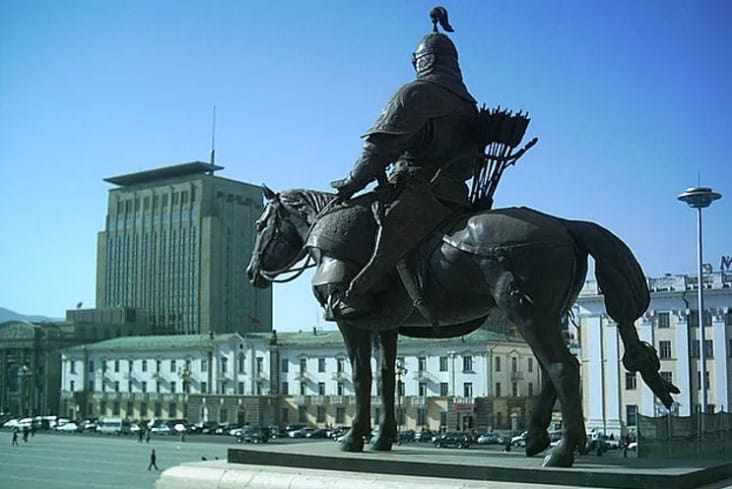
Wikimedia Commons
Males aged 16-60 had to be ready to serve in the military, which resulted in as many as one out of every seven Mongols enlisting! This was an effective strategy for the success of their empire. You could say that they all had the blood of the warrior.
Ride or Die
All Mongol youngsters had to learn how to ride a horse at an early age since the horse was so crucial to the Mongol warrior. It was possibly even one’s most important possession. For success to be instilled in the next generation, it was crucial to start them young.
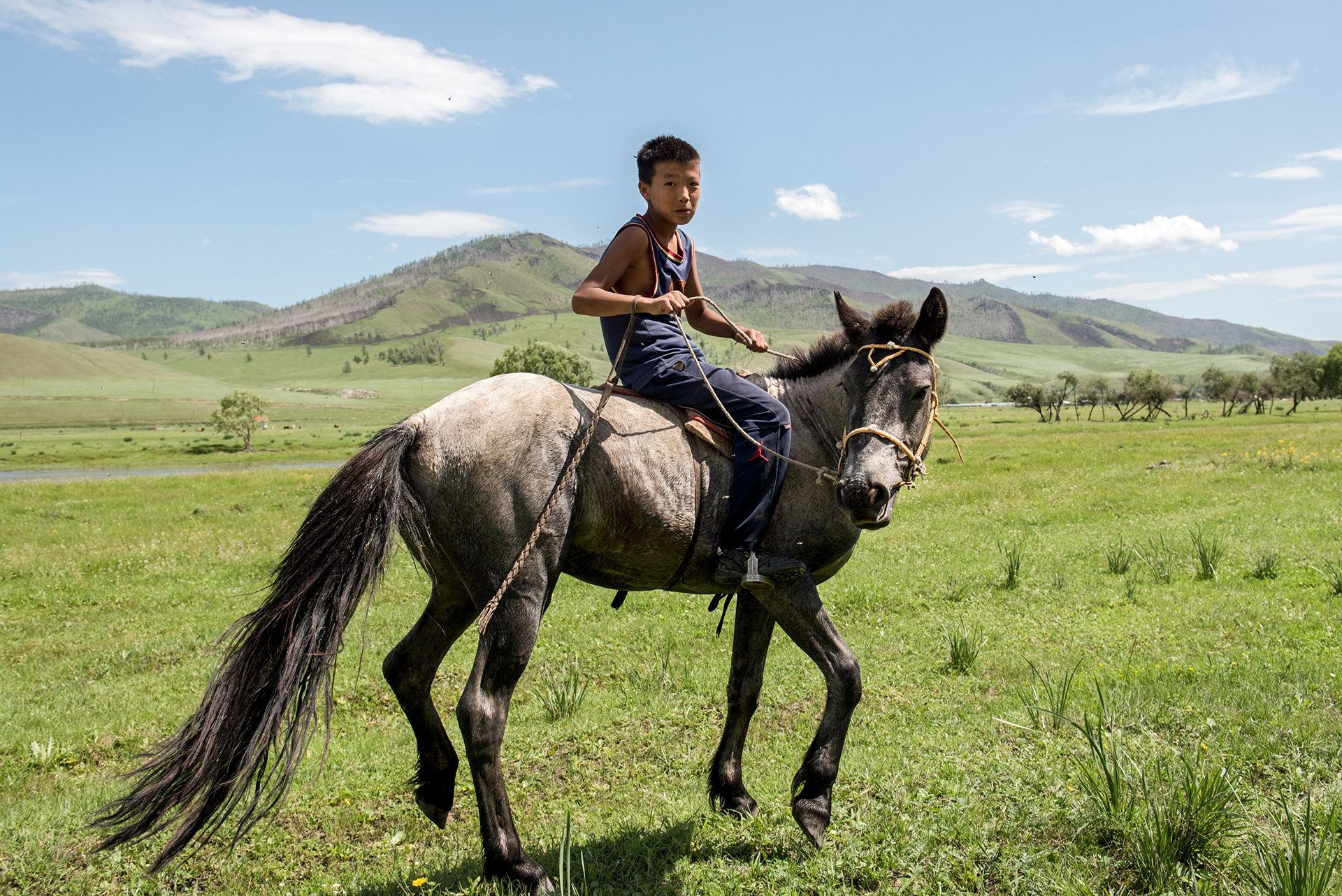
Un-Redd
Each warrior typically possessed more than one horse, and they often traveled with a small herd. This allowed them to be prepared for whatever Genghis Khan could want them to perform at any given time. This was the definition of ride or die culture.
Learn to Be a Sharpshooter
The Mongol soldiers were not only proficient equestrians but also accomplished archers in addition to their other skills. Beginning at a young age, children were required to study archery, and tournaments were often organized to measure their abilities in the field.

Wikimedia Commons
To add to the difficulty of archery, troops were also expected to be able to fire their bows while galloping on horseback. This requirement was tough, but it meant that if their captives were ever able to outrun them, they still would not be able to escape their laser-like aim.
Endure Harsh Consequences for Rule-Breaking
It is likely not going to come as much of a surprise to you to learn that under an empire that was as prosperous and expansive as the Mongol kingdom, draconian penalties, including execution, were put into place to ensure conformity.
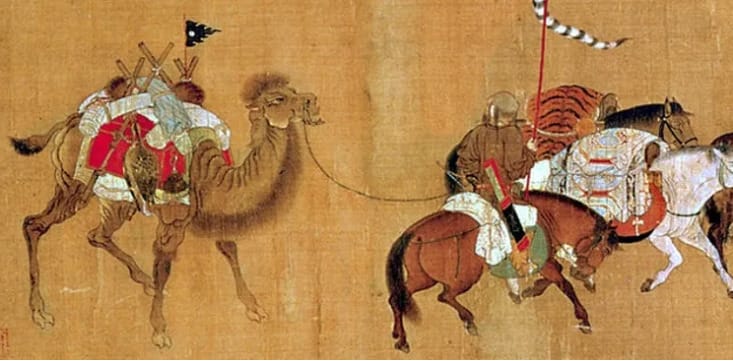
Wikimedia commons
Friar Giovanni di Plano Carpini, an Italian monk, visited Mongolia and stated that the males there were the most submissive he had ever seen in a group of people. All of these observations were coming from a monk, meaning it was a highly credible source.
Engage in Brutal Military Practices
More than a few practices from Khan’s empire would raise concerned eyebrows if brought back today. The Nerge was a particularly violent military technique that was carried out by Mongol soldiers. During the nerge, Mongol warriors (often as many as 10,000 men) would pursue and enclose animals in a certain location.

Wikimedia Commons
The warriors would capture and slaughter all of the animals, regardless of whether they needed them for food. The nerge was often employed for training purposes, but it could just as readily be utilized against human adversaries.
Consume Your Own Horse’s Blood
Mongols were notorious for their taste for horse blood. This is something that does not sit well with most people, especially horse lovers. There is no need to be alarmed, though, as a warrior would not be complete without his or her horse.

Pert Keen
The concept behind this was if a warrior was on a long trip on horseback and there was no trustworthy supply of water in sight, he would cut a slit in the neck of his horse, drink the blood, and then patch the wound back together. This would allow him to continue his journey.
Win At All Costs
It was uncommon for people to resist the Mongols’ ruthless techniques for very long. When anyone managed this feat, the Mongols would simply up the ante. They were known for using prisoners as body shields, and in one case, they diverted a river and flooded a city, drowning all those who were still trying to fight.
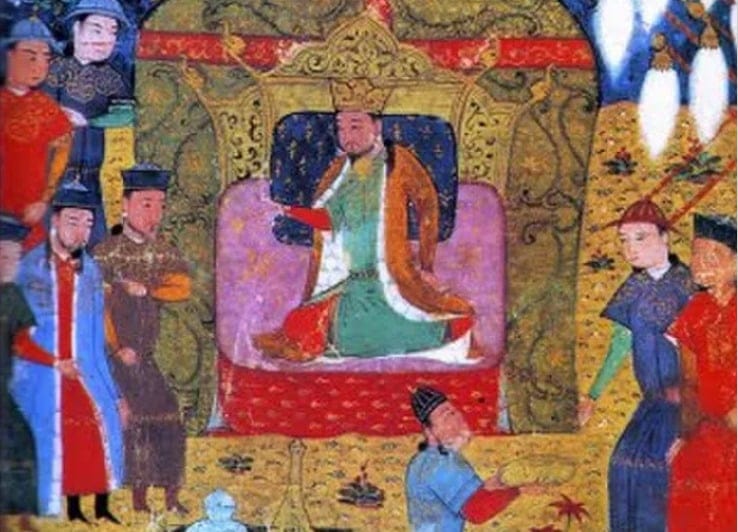
Wikimedia Commons
Anyone who tried to defy Genghis Khan’s army was left in utter horror as a result of the methods the Mongols deployed. To be part of Khan’s military force meant that you had to live by the saying, “All is fair in love and war.”
Never Draw Genghis Khan
Genghis Khan, in contrast to previous great monarchs, strictly forbade anybody inside his realm from drawing him or otherwise depicting his look in any manner. He truly was different from the crowd, and that was part of why he was so formidable.
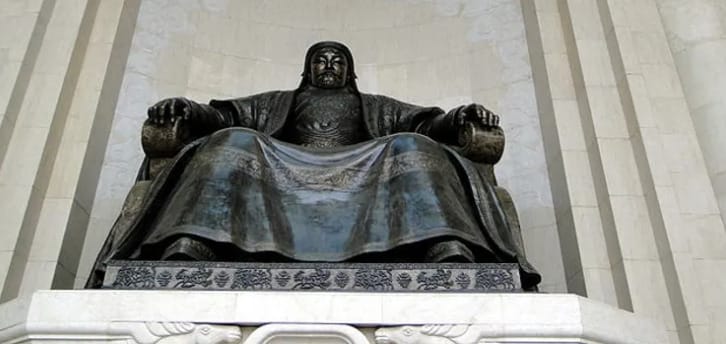
Wikimedia Commons
Because of this, every culture has its own interpretation of what he looked like, and even historians can’t agree on how he should be portrayed. While we will never know for sure what he truly looked like, the air of mystery only adds to his allure.
Bury Your Leader in an Unmarked Grave
Legendary monarch that he was, Genghis Khan could have been laid to rest in the most ornate tomb imaginable, yet that couldn’t be farther from the reality. Before he passed, the Great Khan instructed his men to take his corpse and bury it in an unmarked grave in a remote place.

Wikimedia Common
A thousand horses repeatedly trampled over the burial site to remove any indication that he had been buried there. This strategy seems to have been a success since no one on the planet has any idea where Genghis Khan’s corpse is buried. Thus, one of the world’s most fearsome leaders remains buried in an unknown grave.
Divide and Conquer
The Mongols had several brilliant strategies, one of which was that of splitting their foes. This meant that they would aim to heighten any tension that already existed among enemy tribes, which would ultimately make it easier to tear them apart.
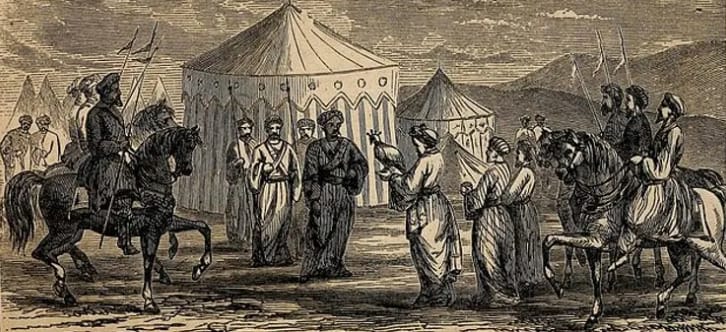
Wikimedia Commons
This proved to be a brilliant tactic in warfare. A house that is divided against itself can never stand on its own. It is susceptible to any form of attack, and the attacks levied by the Mongolian army were no small thing – they were a formidable force.
Learn to Be a Brilliant Strategist
The Mongol army was about more than just brute force, as you can surely tell by now. Using the Mongol method of the tactical retreat, they would assault with a small force, escape, and then reappear later when the adversary was unprepared to deal with them.
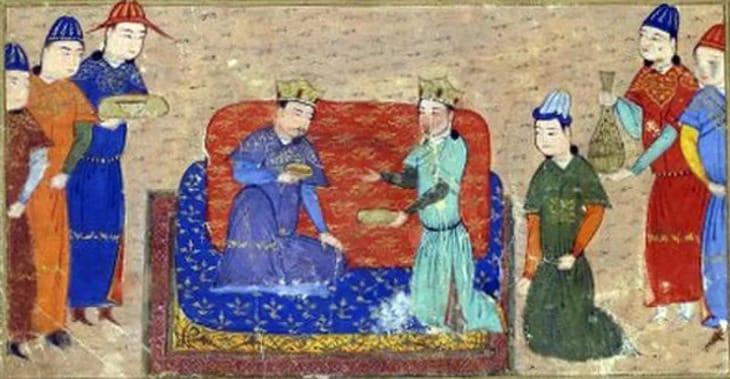
Wikimedia Commons
Many people have since used this tactic for success too. Khan’s tactics can be applied in everyday life, and in many cases, they lead to great success. For example, it’s possible that the Mongols were the source of inspiration for the “rope-a-dope” tactic that Muhammad Ali used in the ring.
Treat Generals Like Family
Genghis Khan held his generals in such high esteem that he would treat them almost as if they were members of his own family and defer to their judgment even while he was in the room with them. This was key to their military solidarity.
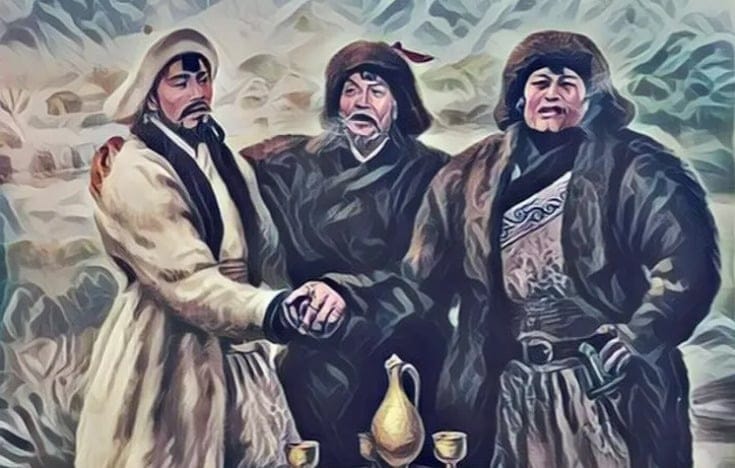
Wikimedia Commons
This could be the reason why he had absolute control of his army – his “family” could not fail him when he wanted them to carry out any order. This makes us think of modern companies that claim their team is a “family.” Maybe this is a tactic taken from Genghis Khan!
Find and Adapt New Military Knowledge
Mongol armies would take any military innovations they could find while conquering other territories. They started out with crude weapons, but over time, they acquired more sophisticated ones through this method. Eventually, they were always able to be one step ahead.

Wikimedia Commons
Large arrows, particularly those with flaming tips, could be fired from weapons like the one you see above from hundreds of yards away. By twisting the winch, the weapon’s operator could triple the contraption’s discharge power, simultaneously drawing back all three bows.
Church and State Must Be Separate
The Mongols, in contrast to previous major empires, allowed their citizens to practice any religion of their choosing. In fact, the Mongols were so tolerant of religion that they exempted clergy and houses of worship from paying taxes. This is a factor that made the Mongol Empire ahead of its time.

Wikimedia Commons
They apparently felt that if they respected the faiths of their subjects, it would reduce the likelihood that those people would attempt to rise up against them. This was a good decision because in history, people fought wars over their beliefs.
The Spoils of War Must Be Shared
People often wonder what a soldier was paid during these times. After an adversary was completely subdued, Genghis Khan did not provide his men with a consistent wage. Instead, he distributed the plunder that was taken from the defeated foe between them all.
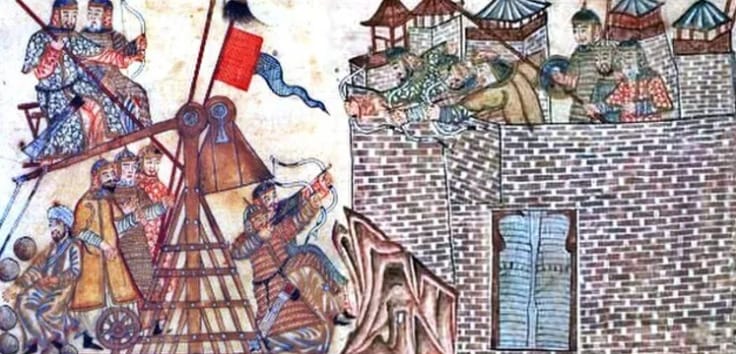
Source: Wikimedia Commons
A devoted body, the Jarqu, made sure everyone got their fair portion of the booty. They also ensured it was given out in a way that made everyone happy. For example, horses, slaves, precious metals, textiles, high-quality manufactured goods, and even food were distributed according to need.
Recruit Engineers from Conquered Regions
Engineers were crucial to the Mongol army because they were able to support siege warfare by manufacturing catapults, gunpowder, and projectiles to tear down opposing fortifications. Engineers were able to achieve this because of the expertise they developed in their chosen trade.
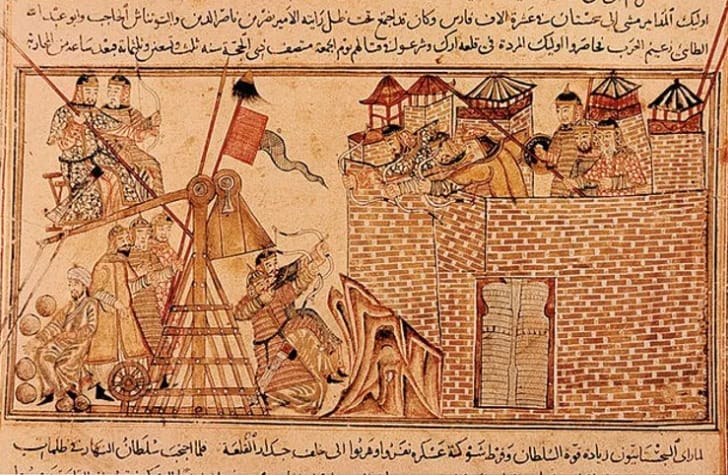
Wikimedia Commons
The majority of the time, the Mongols recruited their engineers from Chinese or Muslim-dominated regions that they had already conquered. Their craft was what made the military an unstoppable force that was always a step ahead of the enemy.
No Torture Allowed
Though the Mongols were known for their cruel methods of warfare, it is important to note that Genghis Khan did not permit the use of torture anywhere in his empire. This is considered to be rather progressive for the time in which he lived.
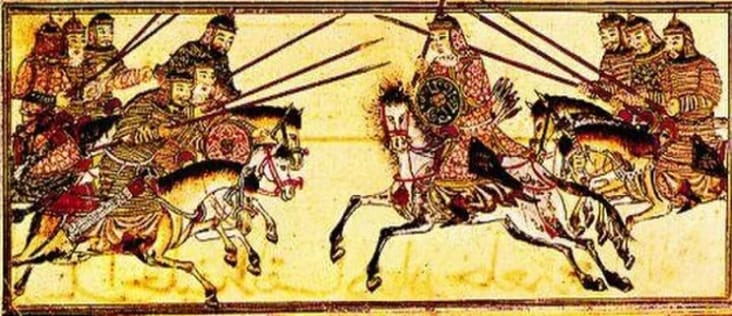
Wikimedia Commons
There are things that may seem harsh about the Mongol Empire, but we can agree their ban on torture was a positive, humanitarian rule. It applied to both soldiers and captives, showing that the Mongols had some level of respect for human life and dignity.
Use the Decimal System
The use of the decimal system in military operations was important to the Mongols’ reputation for efficiency. Each squad consisted of ten soldiers, ten arbans, one hundred zuuns, one thousand Mingghans, and ten tumens (10,000). We have the Mongols to thank for this system.
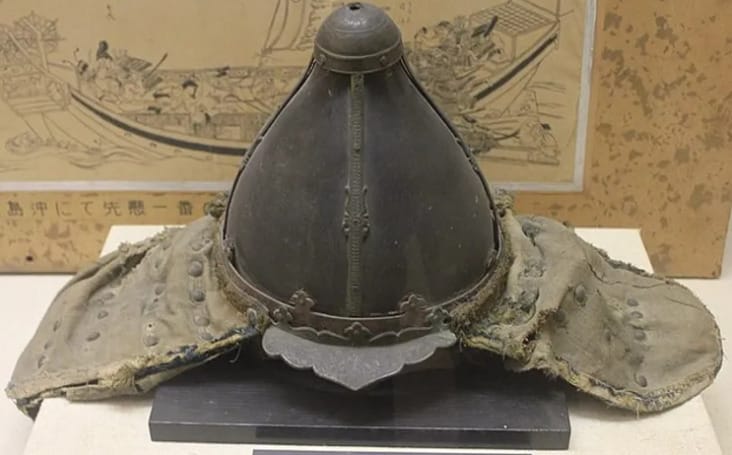
Wikimedia Commons
The technique enabled Chinggis (an alternative spelling for Genghis) to communicate effectively with his troops. The decimal system also made it easier for the empire to communicate and control its armies. Additionally, decimal stations were established, allowing horses and men to rest and refuel after long journeys.
The Captain Goes Down with the Ship
Getting rid of an enemy’s commander was one of the most reliable ways to throw off their plans. Genghis Khan quickly realized that if he let the opponent commander survive, it would be too easy for him to flee and collect additional forces than if they took the enemy leader out of the equation first.
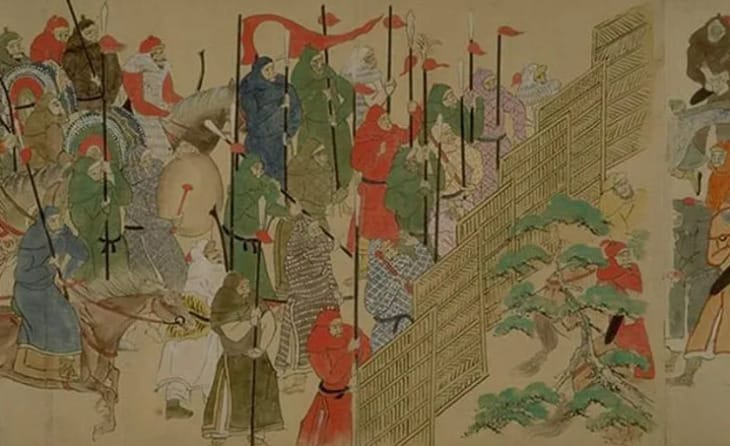
Wikimedia Commons
As they say, when one wants to get a snake, one should chop off its head. In this circumstance, taking out the head of the military force will disarm the troops as well. Genghis Khan did not become a great conqueror without learning a few tricks.
Do Not Engage in Every Battle
Not every battle is worth fighting, so to conserve precious energy, one should pick their battles wisely. It was common practice for Mongol warriors to avoid engaging in combat with opposing forces unless they were 100% convinced they had a fair chance of emerging victorious from the conflict.
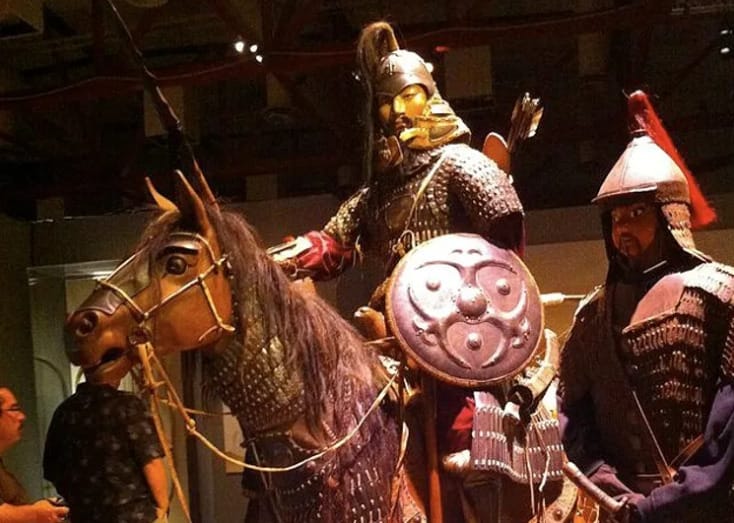
Wikimedia Commons
Sometimes, they would even divide their forces into smaller groups before coming back together for a surprise assault on the enemy. It is wise to take breaks and regroup. That time-out can often bring you better insight than when you’re in the heat of the battle.
Hide but Don’t Run
Because they were such talented riders, the Mongols were able to cover a considerable deal of ground in a short amount of time, which allowed them to surprise their adversaries. Their enemies would never see them coming, meaning they had no time to prepare for an attack.
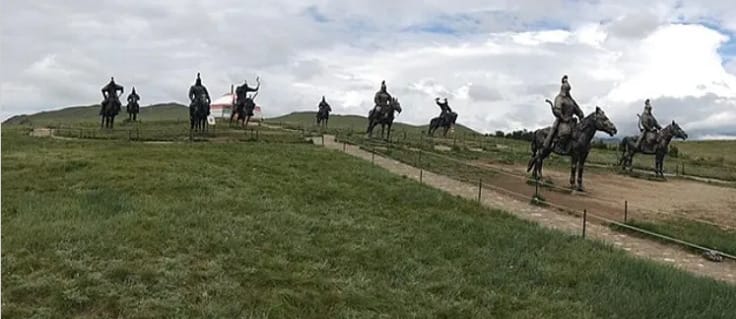
Wikimedia Commons
On a single day, it was not uncommon for soldiers to be required to go as far as 75 kilometers on horseback. This is very impressive for those days. It’s easy to forget about how far technology has taken us and that at one point in time, horsepower was quite literally power that came from a horse.
Keep Your Enemies Close
Genghis Khan would wait to take action against his adversaries until he had accumulated a sufficient amount of intelligence about them. A talented tactician, he understood that knowledge is power, and he would not gamble away his forces on something he could have prepared for.
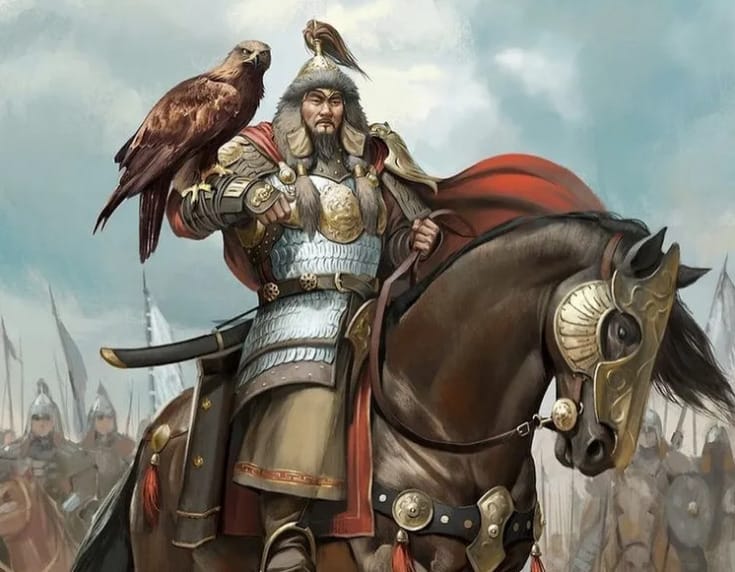
Instagram/hordeofsteppe
Years of acquired knowledge taught him how to prepare for battle. He needed to know how many troops the enemy had, so he would occasionally send spies disguised as priests or merchants into enemy territory to find out as much information as they could.
Society Should Be Egalitarian
Khan was all for the establishment of an egalitarian society, characterized by the belief that all people are born equal and that all members of society have the right to equal opportunities. This was both impressive and aspirational, especially for the time.
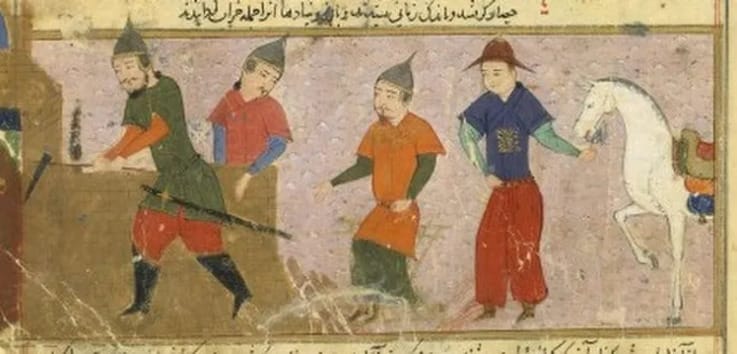
Wikimedia Commons
The Mongols, in contrast to other cultures of the period, made no distinctions based on social status. It was instead established by Genghis Khan that a soldier might rise in rank based only on his ability, not the family he was born into.
Treat Women As Equals
In comparison to their counterparts in other countries, women in Mongol society were granted a much greater number of privileges. They were able to function in positions of political influence, and some of them even advised Khan.
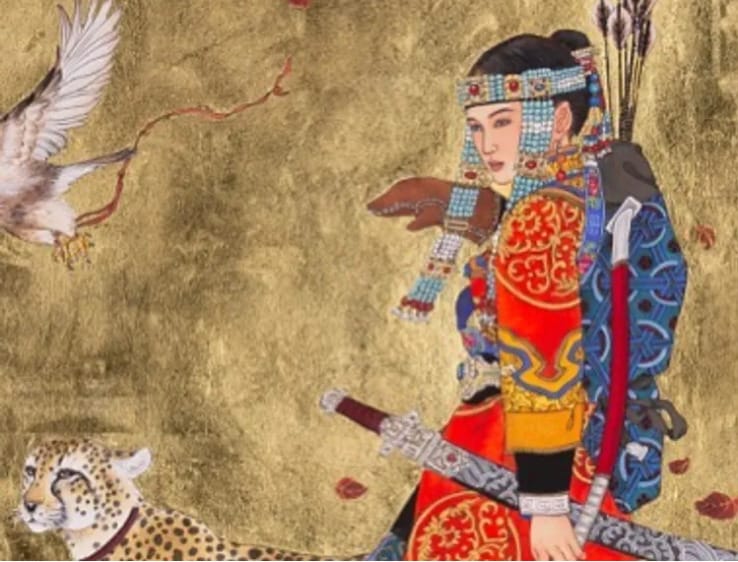
Instagram/warrior history
Women in Mongolian culture had considerably more rights than they do in contemporary cultures to the east and west of the country. For example, they could inherit property, participate in religious rituals, and even become shamans. In addition, the wives of senior tribal leaders were allowed to express their opinions during tribal gatherings.
Understand the Flanking Strategy
The flanking plan was undoubtedly one of Genghis Khan’s many cunning military maneuvers, and it is certain that he had many more clever tricks up his sleeve. For the plan to work, some soldiers would have to skirt around the periphery of an enemy’s forces rather than heading into the fray.
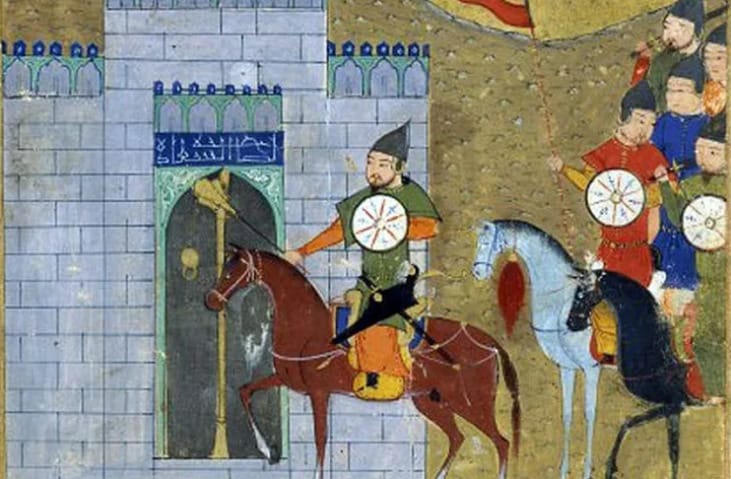
Wikimedia Commons
By conducting their operations in this manner, the Mongols were able to totally encircle their foes and often triumph over forces that were far larger than their own. Genghis Khan did not become a great conqueror without devising a few impressive battlefield maneuvers!
Have a Diverse Arsenal of Weapons
In combat, the Mongols didn’t simply employ bows and arrows; they also utilized crossbows and enormous catapults that could fling boulders and spears a great distance. All of these terrifying weapons caused their opponents to cower in fear.
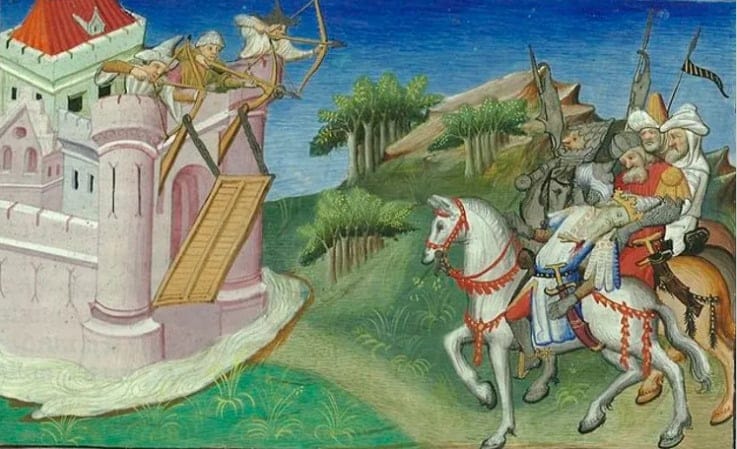
Wikimedia Commons
The soldiers of the Mongol army were well-versed in the use of battle axes, lances (sometimes hooked to dislodge enemy horsemen), spears, daggers, long knives, and even small, single-edged swords, which were all common weapons of war in the region. Can you imagine facing all of that in battle?
Be Like Water, My Friend
Even if it meant departing from more conventional Mongol techniques, Genghis Khan was not beyond adjusting his military strategy to accommodate whatever he believed to be appropriate in the moment. We think that he and Bruce Lee shared the same sentiment that a warrior should be like water.
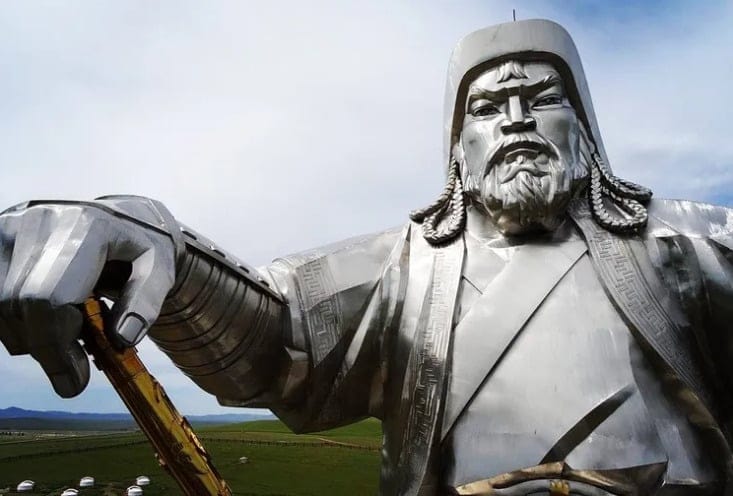
Instagram/vxvdvxv
For instance, as the Mongol Empire started to grow, and Genghis Khan recognized he would need to conquer large towns in a more efficient manner, he understood he would need to use siege warfare. Being as flexible as water is something that he understood well, and it contributed greatly to his military might.
Ride Fast
The metal stirrup was a simple innovation that proved to be rather useful. It enabled a soldier to remain seated on his horse while having both hands available to draw and discharge his bow and arrows. The Mongols were effective with their arrows from horseback.

Instagram/americanequis
Because the Mongols were such talented archers, this rather simple innovation turned out to be highly successful for them. Stirrups changed the game and enabled several civilizations, not just the Mongols, to become almost invincible. People trembled when they heard the Mongol horses galloping from afar.
Know How to Cross Any Terrain Skillfully
As if their expert marksmanship was not terrifying enough, Khan’s men were also experts in traversing rough terrain. Even during the icy winter months, when the rivers would be completely frozen over, or during the flooding of the spring season, the Mongols were adept at crossing rivers.
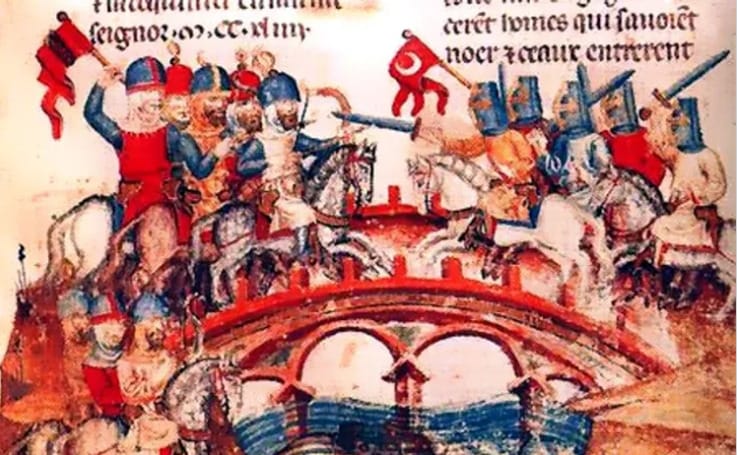
Wikimedia Commons
The Mongols were able to defeat the Hungarian monarch Béla IV at the Battle of Mohi, which you can see depicted in the artwork above. The Mongols crossed the Sajó River with 30,000 cavalrymen in only one night, despite the fact that it was flooding.
Know Where to Make the Battle Happen
During the reign of Genghis Khan, the Mongols rarely engaged in naval combat. After he passed away, they engaged in naval operations against Japan but were ultimately unsuccessful in their endeavors. When picking fights, it’s essential to know your best traits, and unfortunately, naval warfare was not a strong suit for the Mongols.
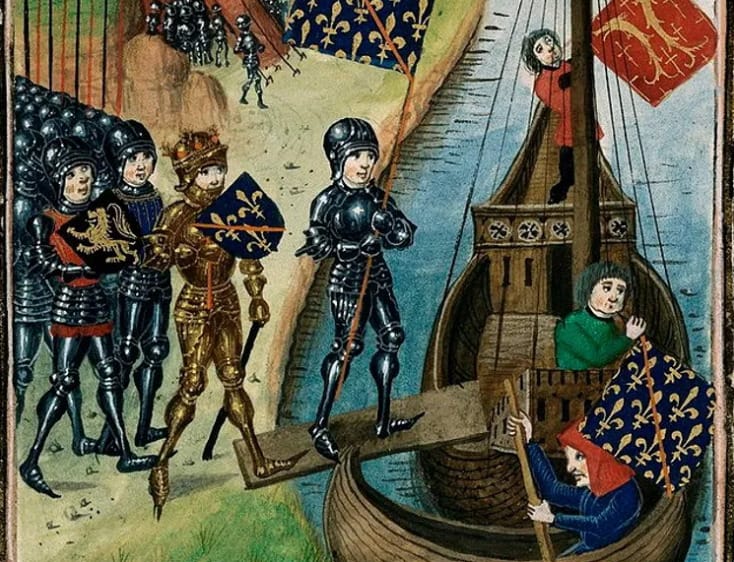
Wikimedia Commons
Crusader armies dominated the waters in the Eastern Mediterranean, and Kahn likely never would have sought to challenge them on the sea. Open water is unpredictable and is a formidable force on its own. It’s no wonder the Mongols had trouble getting their sea legs!
